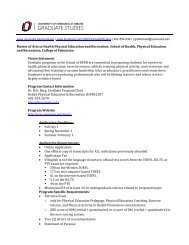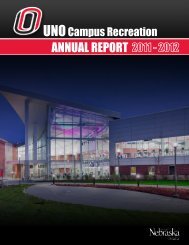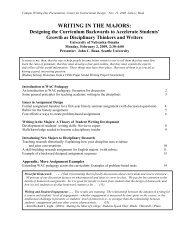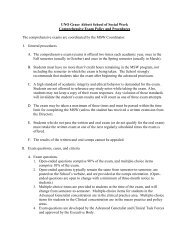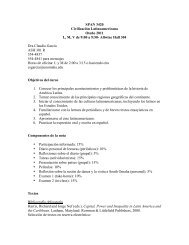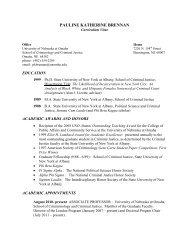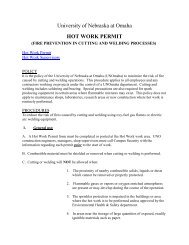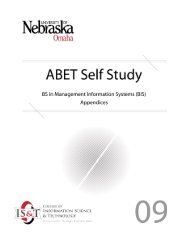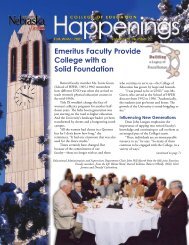TEACHING FOREIGN LANGUAGES IN THE PRIMARY SCHOOL
TEACHING FOREIGN LANGUAGES IN THE PRIMARY SCHOOL
TEACHING FOREIGN LANGUAGES IN THE PRIMARY SCHOOL
Create successful ePaper yourself
Turn your PDF publications into a flip-book with our unique Google optimized e-Paper software.
Multilingualism<br />
MULTIL<strong>IN</strong>GUALISM <strong>IN</strong> <strong>THE</strong> EUROPEAN UNION:<br />
<strong>TEACH<strong>IN</strong>G</strong> <strong>FOREIGN</strong> <strong>LANGUAGES</strong><br />
<strong>IN</strong> <strong>THE</strong> <strong>PRIMARY</strong> <strong>SCHOOL</strong><br />
Alessandra Padula<br />
University of L’Aquila, Italy<br />
In the European Union, multilingualism has become a political goal but also a political need.<br />
Today nearly 500 million people with different historical, social and cultural backgrounds live and<br />
work in the European Union. Out of many diverse nations, communities, cultures and language<br />
groups, a single European Union is built around the equal interchange of ideas and traditions.<br />
There is therefore a political need to increase multilingualism in the European Union. The goals of<br />
forging cohesion between Member States, and enhancing the feeling of being European citizens in<br />
the citizens of those States, can be reached through intercultural understanding and enhanced<br />
communication skills (Commission of the European Communities 2003).<br />
Yet there is also an economic need to increase multilingualism in Europe. Trade between the<br />
Member States of the European Union is growing every year (Biancone 2006). So-called Euregios<br />
are being developed across the borders of the Member States (Perkmann 2002). Exchanges between<br />
the inhabitants of the European Union are becoming more and more frequent.<br />
Moreover, even though many Member States of the European Union are officially monolingual<br />
countries, the linguistic situation is more complex. In each State, there is an official language, one<br />
or more minority languages, and other languages spoken by large groups of immigrants (Nelde,<br />
Strubell and Williams 1996).<br />
Therefore, not only single individuals, but also States are interested that all people can speak one or<br />
more languages, besides their mother tongue.<br />
Language acquisition<br />
What is the best way to develop adequate linguistic proficiency in several languages?<br />
This research field was investigated not only by linguists and educators, but also by psychologists<br />
and neurophysiologists.<br />
Speaking and understanding speech, reading and writing depend upon the usage of certain<br />
specialized areas of one brain’s hemisphere: the dominant hemisphere.<br />
During the first years of their life, children listen to other speaking subjects, who utter specific<br />
verbal sounds. In this way, children program their brains with the phonemes (basic phonetic sounds)<br />
of the language they hear all around them. Later, they will use these basic units to form words and<br />
sentences. In other words, during the early period of life, children deposit, in a specific area of the<br />
1
ain, language units which they will use later for additions to their vocabulary. These words and<br />
sentences will form the basis for all motor activity, thinking and other intellectual functions<br />
(Crowell, Jones, Lee, Schuchert, Schumann and Wood 2004).<br />
If, during the early period of their life, children are in contact with people who speak other<br />
languages, they will lay down language units of each of those secondary languages, and these<br />
language units will remain life-long (Mayberry, Lock and Kazmi 2002).<br />
Years later, the few hundreds of words which a child acquires early in each language can seem to<br />
be lost, but the speech units, the deep structures of each language, will never be lost.<br />
For this reason, if a child is casually exposed to a second language, he will be able to speak both<br />
languages easily, and to switch effortlessly from one to another.<br />
But learning a second language later in life is fundamentally different from acquiring it early. After<br />
the age of 10 - 12 a child’s brain can no longer encode new basic language units in the same way.<br />
If a subject tries to learn a second language as a teenager or adult, he will use a mental translation<br />
process and will speak the second language with the accents of his native tongue (Singleton 2001).<br />
In fact, linguists claim, the processes used by early learners and older ones in treating both<br />
phonology and morphology are fundamentally different (Lightbown and Spada 2006).<br />
Phonology is the system of the specific speech sounds which characterize a language. Phonological<br />
production and perception are especially affected by the critical period, so that older learners have<br />
accents and often misperceive phonetic features (Flege 1987; Scovel 1989).<br />
As regarding morphology, which is the system of word-forming elements and processes in a<br />
language (such as inflection, derivation, and compounding), early learners treat morphology<br />
analytically, whereas older learners treat it holistically. It follows that early learners know more<br />
about the details of lexical items than older learners (Newport 1990).<br />
Researchers investigated why language is acquired best in early childhood and found that the age<br />
constraints on language acquisitions seem to be caused by brain maturation. In other words, the<br />
superiority for language acquisition shown by young children is due to the plasticity of their<br />
younger brain (Penfield and Roberts 1959; Lenneberg 1967).<br />
Using magnetic resonance imaging techniques to map brain activity in healthy, bilingual adults,<br />
researchers found important differences based on the age at which the second language was<br />
acquired. Researchers found that the brains of the adults who had learned two languages as very<br />
young children stored those languages together in the same area of the brain. On the contrary, those<br />
who acquired a second language in adolescence, used a second region of the brain near the first, but<br />
separate.<br />
The research suggests that babies and preschoolers learn languages in their environment without<br />
apparent effort because their brain encodes these languages into specific hardwired neuronal<br />
circuits. Yet when adolescents and adults learn a second language the language acquisition process<br />
is quite different.<br />
Therefore, in accordance with the demands of the brain’s physiology, since the specific brain areas<br />
are more plastic and receptive in the first decade of life, the optimum age to begin general schooling<br />
in secondary languages is between 4 and 10.<br />
2
For this reason, according to the Action Plan, Member States of the European Union offer their<br />
pupils the opportunity to learn one or two foreign languages from the first years of primary school.<br />
Teaching foreign languages in the primary school: general aims<br />
In each European primary school the percentage of immigrant children has grown very much in the<br />
last years (Bosisio 2005). Moreover, in some Member States, among which Italy, children with<br />
special needs, regardless of the severity of their illness, attend regular classes during compulsory<br />
school.<br />
Therefore there is a need to integrate these children in their class group, promoting the harmonic<br />
development of their personality, while paying particular attention to emphasizing the individual<br />
abilities and potentials not only in learning contents, but also in communicating, socializing, and<br />
forming relationships.<br />
Indeed, the present theory of integration emphasizes the specific differences of each individual. It<br />
points out that every single difference can be, for each member of a group, a source of stimulation<br />
and proposal, reflection and discovery of his own identity.<br />
In this way ethnic, cultural and physical diversities are not emphasized in order to create divisions,<br />
but on the contrary take on great value in uniting individuals in the group. In other words,<br />
pedagogists claim, each child can contribute to the psychological, emotional and cognitive<br />
development of the class group with his/her experience and culture.<br />
Therefore, specific didactic methods are required when there are immigrant children (who use<br />
different languages, which are embedded in different cultures) and children with special needs in a<br />
class. These methods must aim at promoting communication, socialization and relationshipforming,<br />
emphasizing that diversity is a source of psychological, emotional and cognitive<br />
development for each participant in the group (Milani, Cambiaghi and Pontani 2005).<br />
Teaching foreign languages in the primary school: methods<br />
As at the primary stage pupils’ attention time is quite short, teachers have to diversify methods and<br />
forms of teaching and learning, as regards to<br />
• time-table of foreign languages courses<br />
• classroom social climate<br />
• presence of children of immigrants and children with special needs (Balboni 1989).<br />
The first important aspect of modern didactic methods is their effort in sustaining pupils’<br />
motivation: in fact, when learners are interested in a topic, they are motivated to acquire a language<br />
to communicate (Mariani and Pozzo 2002).<br />
Indeed, there is a so-called “affective filter”, which can prevent or block the input necessary to<br />
acquisition. A low affective filter is therefore desirable. Learners who are motivated, relaxed and<br />
have a good self-image and self-confidence are more receptive to the input they receive. On the<br />
contrary, bored learners have a high affective filter which can prevent acquisition. (Krashen 1981)<br />
A second important aspect of modern didactic methods follows from the concept that language<br />
learning has to be meaningful (Novak 2001).<br />
3
As pupils need time to acquire a new language, it is important to offer them a natural, meaningful<br />
system for language development, which includes both interaction between teacher and pupils, and<br />
between pupils, for instance through working in groups.<br />
Indeed, there are two different ways of developing skills in a foreign language (Porcelli 1994).<br />
In the first way the foreign language acquisition develops similarly to the acquisition of child’s<br />
mother tongue – with no conscious attention to language form. In this way acquisition is an<br />
unconscious process, and is used to create spontaneous messages in the target language.<br />
Then there is a second way of developing skills in a foreign language, which should not be<br />
considered alternative, but complementary to the first way. In this second way learning is<br />
considered as a conscious process: the aim of this process is to develop conscious rules about the<br />
foreign language. Yet even grammar can be presented in a playful style (Bruner, Jolly and Sylva<br />
1981).<br />
For instance pupils can write short sentences on paper strips and color nouns and pronouns with a<br />
red, verbs with a blue, adjectives with a yellow, and articles with a green background. Then they<br />
can substitute each “brick” with another brick of the same colour: a noun with another noun or with<br />
a pronoun, a verb with another verb, and so on. In this way they can do grammatical exercises<br />
without getting bored, and practise not only an unconscious, but also a systematic methodological<br />
approach to language.<br />
A third important aspect of modern didactic methods is their “interdisciplinarity”, that is their use of<br />
other communication media that can help comprehension: pictures, mime, gestures, music, and so<br />
on.<br />
In the primary school most activities are aimed to develop perception and processing of different<br />
kinds of visual, auditory and gesture stimuli (Richieri 1988). For this reason, foreign language<br />
lessons can be integrated with graphs, tables, maps and charts (Taeschner 2002). Many terms and<br />
grammatical rules can be acquired “in a musical way”, through pronunciation exercises, popular<br />
music, hits and songs. Specific mimic and movements can be added to spoken or sung texts, and<br />
vice-versa, suitable songs and verbal texts can be uttered in walking/running along routes<br />
(Margarito 1991).<br />
Through organized play, singing, mimic activities, etc., teachers can help pupils to use and<br />
interchange the various languages, so becoming able to make better use of their physical, expressive<br />
and communicative means (Semola 1996).<br />
Conclusions<br />
To conclude, using music, mime, movements, etc. in teaching foreign languages in the primary<br />
school can be useful and effective to:<br />
- improve pupils’ overall/specific competence in the foreign language<br />
- develop multilingual interests and attitudes<br />
- increase pupils’ motivation<br />
- raise standards of attainment across the curriculum<br />
- develop an interdisciplinary approach to some subjects<br />
4
Last but not least, acquisition of foreign languages can improve understanding of the partner<br />
communities and open pupils’ minds to the thought and the culture of other communities, thus<br />
building a bridge to peace (D’Andretta 1999).<br />
Bibliography<br />
- Balboni P.E., "Le tecniche di una glottodidattica specifica per la scuola elementare", in S.<br />
Sodini (a cura di), Insegnamento di L2 nella scuola elementare, Milano, B. Mondadori,<br />
1989, pp. 91-105<br />
- Biancone P.P., Le attività immateriali, l'avviamento e l'impairment nei bilanci - Principi<br />
Contabili Internazionali e US GAAP, Giuffrè, Milano, 2006<br />
- Bosisio C., Dagli approcci tradizionali al Quadro comune europeo di riferimento.<br />
Riflessioni glottodidattiche e applicazioni per l’insegnante di italiano L2, Pubblicazioni<br />
ISU-Università Cattolica, Milano, 2005<br />
- Bruner J.S., Jolly A., & Silva K. (a cura di), Il gioco. Ruolo e sviluppo del comportamento<br />
ludico negli animali e nell’uomo, Armando, Roma, 1981<br />
- Commission for the European Communities, Promoting language learning and linguistic<br />
diversity: An Action Plan 2004 – 2006, 24.07.2003<br />
- Crowell S., Jones N.E., Lee N., Schuchert S.A., Schumann J.H., & Wood L.A., The<br />
Neurobiology of Learning: Perspectives from Second Language Acquisition, Lawrence<br />
Erlbaum Associates, Mahwah, NJ, 2004<br />
- D’Andretta P., Il gioco nella didattica interculturale, EMI, Bologna, 1999<br />
- Flege J., “The production of “new” and “similar” phones in a foreign language: evidence for<br />
the effect of equivalence classification”, J. Phonetics, 15, 47-65, 1987<br />
- Krashen S., Second language acquisition and second language learning, Pergamon Press,<br />
Oxford, 1981<br />
- Lenneberg E.H., Biological foundations of language, New York: Wiley, New York,1967<br />
- Lightbown P., & Spada N., How languages are learned, Oxford University Press, Oxford,<br />
USA, 2006<br />
- Margarito M. (a cura di), Parole ai margini. Ludismo linguistico, musica e scrittura, “récit<br />
de vie”, Tirrenia Stampatori, Torino, 1991<br />
- Mariani L., Pozzo G., Stili, strategie e strumenti nell’apprendimento linguistico, La Nuova<br />
Italia, Firenze, 2002<br />
- Mayberry R. I., Lock E., & Kazmi H., “Linguistic ability and early language exposure”,<br />
Nature, 417, 38, 2002<br />
5
- Milani C., Cambiaghi B., & Pontani P., Europa plurilingue. Comunicazione e didattica. Atti<br />
del Convegno Internazionale di studi (Milano, 4-5 novembre 2004), Vita e Pensiero,<br />
Milano, 2005<br />
- Nelde P., Strubell M., & Williams G., Euromosaic: The production and reproduction of the<br />
minority language groups in the European Union,: Office for Official Publications of the<br />
European Communities, Luxembourg, 1996<br />
- Newport E., “Maturational constraints on language learning”, Cognitive Science, 14, 11‐<br />
28, 1990<br />
- Novak J., L’apprendimento significativo, Erickson, Trento, 2001<br />
- Penfield W., & Roberts L. (eds.), Speech and brain mechanisms, Princeton University Press,<br />
Princeton, N.J<br />
- Perkmann M., Policy entrepreneurs, multilevel governance and policy networks in the<br />
European polity. The case of the Euregio, University of Leicester, Leicester 2002<br />
- Porcelli G., Principi di glottodidattica, Brescia, La Scuola, 1994<br />
- Richieri C., " Interazione di linguaggi in glottodidattica: il sistema computer-videodisco ", in<br />
SeLM, n. 6, 1988, pp. 216-221<br />
- Scovel T., A time to speak: A psycholinguistic inquiry into the critical period for human<br />
speech. Newbury House Publications, Cambridge, MA, 1989<br />
- Semola G., Il curricolo di L2. Principi generali e percorsi operativi, Tracce, Pescara, 1996<br />
- Singleton D., & Lengyel Z. (eds.), The age factor in second language acquisition,<br />
Multilingual Matters, Clevedon, UK, 2001<br />
- Taeschner T., L’insegnante magica. La lingua straniera nella scuola dell’infanzia: risultati<br />
del progetto, Roma, Borla, 2002<br />
6




